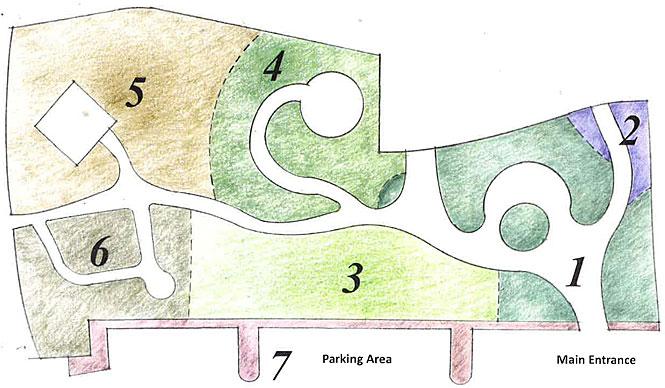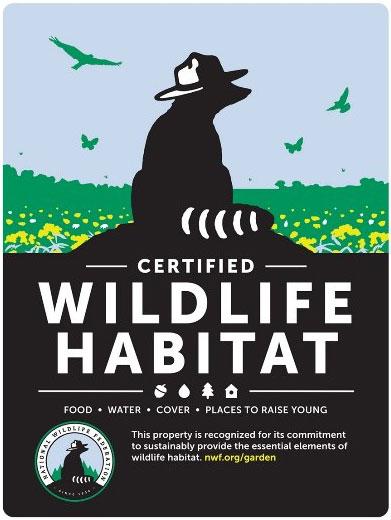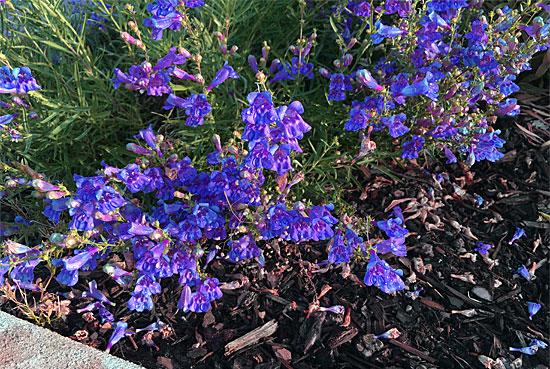The Water-Efficient Landscape (WEL) is proof that a beautiful garden can thrive on low amounts of supplemental summer water. This demonstration area is composed of seven gardens designed to offer a variety of landscaping options.
The map below shows the location of each garden listed at the left. Photos and descriptions of the gardens are included below.
In addition to water wise plant selection, the WEL incorporates various water efficient landscaping techniques, including the use of compost to improve soil structure, drip irrigation, and mulch to reduce soil moisture loss and weed growth.
Fair Oaks Horticulture Center
11549 Fair Oaks Blvd., Fair Oaks, CA 95628 (Map/Directions)
The gardens demonstrate that it is possible to conserve water and have an attractive landscape at the same time. By using water meters, we have found that our WEL gardens use about 65 to 75 percent less water than an average lawn of similar size.
1. Welcome Garden
California is considered to be a “Mediterranean” climate because of its cool, wet winters and hot dry summers. Plants in this garden are naturally adapted to this weather type, needing less water and care than many water-loving nursery selections. The Welcome Garden displays plants that can defend themselves against summer drought and lean soils yet are key plants for a year-round attractive landscape.
2. Shade Garden
Our shade garden will feature low water use plants showcasing a variety of foliage, colors and textures. These plants will be suitable for those challenging areas that get little sun and may need to compete with tree roots.
3. Perennial Garden
This area is filled with herbaceous (non-woody) perennials, grasses and bulbs that bloom at different times, providing changing seasonal interest. Perennials live for three or more years, many die back to the ground at the end of the growing season.
4. Popular Plant Garden
These plants are commonly found in the nursery trade, but survive on lower amounts of water than customarily assumed. A permeable concrete walk and patio is set off by the colorful blooms.
5. Native Plant Garden
The California natives in this garden were selected for their residential application. With minimal supplemental summer water and little to no soil amendment, these can be kept attractive year round. Natives attract more beneficial insects than non-natives, and they incorporate well into established Mediterranean-type gardens.
6. Wildlife Habitat Garden
Our goal is to educate gardeners about how we can create beautiful landscapes that produce healthy ecosystems where wildlife and humans can thrive together. These areas will have a more natural appearance, be very aesthetically pleasing, and will be alive with birds and butterflies and a multitude of pollinators and beneficial insects.
7. Streetscape Garden
The parking lot planters showcase plants accustomed to surviving with minimal summer water, poor soil and the “heat island” effect created by the surrounding paving which absorbs solar radiation and re-emits it as heat











